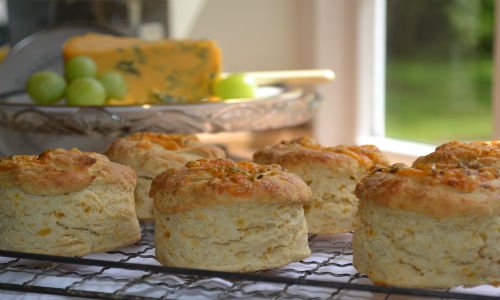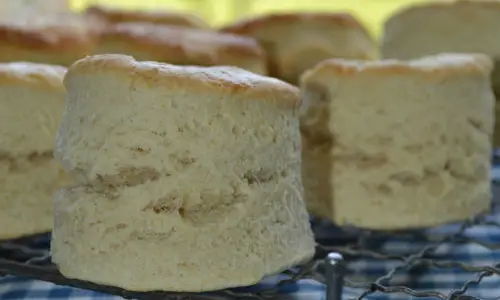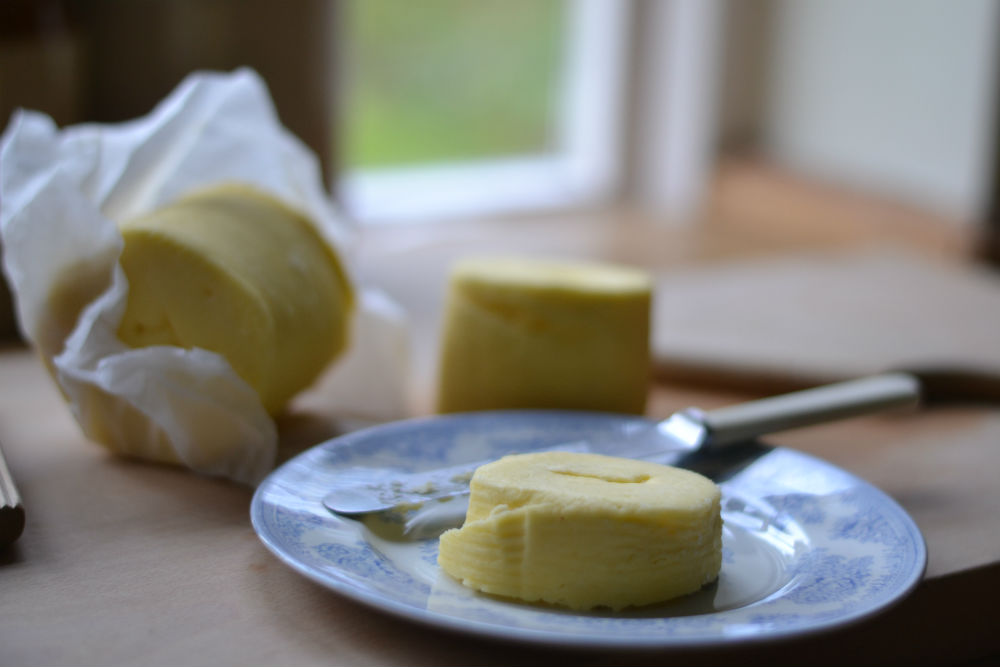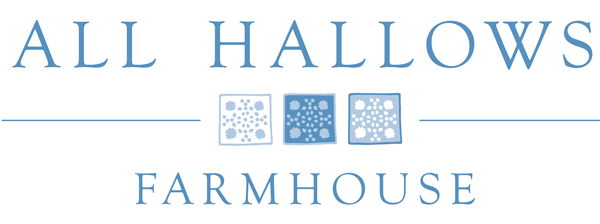RECIPE: Buttermilk Scones
Tried and tested seasonal recipes from a country cookery school kitchen. Hacks and get ahead tips for EVERY cook.
We celebrated National Cream Tea Day with our friends at ‘In Jolly Good Company’ who organise The Step Outside Group at the local allotment too!
This is our favourite scone recipe. The trick to making scones is to be wary of overhandling the dough. Once you’ve mastered the basic recipe, create sweet or savoury versions by adding fruit or grated cheese. Scroll down for a few seasonal suggestions:
Makes 4 – 6
Afternoon Tea
Prepare 15 mins
Cook 12 mins
Total less than 30 mins


Ingredients:
- 225 g self raising flour
- 150 ml buttermilk plus extra for brushing
- 50 g unsalted butter – cold, cut into cubes
- 1/4 teaspoon sea salt – finely ground
Waste not, want not:
Scroll down to check out sustainable recipe ideas. To make the most of any leftover buttermilk…
Delicious served warm with jam & cream or try adding:
- dried cranberries & orange zest
- finely chopped rhubarb
- date & walnut
Or for a savoury version:
- cheddar & chives
- stilton & walnut
- wild garlic pesto & goats cheese
Method
Preheat conventional oven to 220 C Gas Mark 8
Line a baking tray with parchment.
Put the flour in a mixing bowl with the butter and using your fingertips rub together to resemble fine breadcrumbs. Or blitz together in your food processor.
Add the buttermilk in one go and mix well to combine.
For a light scone take care not over knead. On a lightly floured worktop, roll or press dough out to a thickness of 1.5cm. Using a 6.5cm cutter, stamp into four rounds. Gently bring the scraps of dough together and stamp out two more scones.
How to bake:
Brush tops with reserved buttermilk or egg wash Make sure that the glaze does not dribble down the sides. Slide tray on to the middle shelf of pre-heated convention oven and bake for for 7- 10 minutes. For a more even rise turn tray around half way through cooking time.
For AGA cooks:
Bake on the third runner of AGA roasting oven for 10-12 minutes.
Set your timer to 6 minutes (approximately half the cooking time). Check the scones and turn the tray, front to back. This will give the scones an even rise.
If preparing a double batch, AGA cooks can also slide a baking tray on to the floor of the roasting oven, but also rotate the trays halfway through cooking time.
When scones have risen and golden brown , remove from the oven. Carefully transfer to a cooling rack. Enjoy warm with butter and jam for breakfast or serve with clotted cream for tea.
Cook’s Tip: How to make great scones
- Buttermilk and nut milks will give your scones a lighter texture. Alternatively try a combination of dairy milk and yoghurt.
- Use cold butter straight from the fridge and cut into cubes. Rub together using fingertips and not the palm of your hand.
- Measure the liquid carefully and add all at once. Allow time for the flour grains to absorb the moisture.
- Don’t over handle the dough and be generous with the thickness of your dough! Don’t roll too thin.
- If substituting the flour with a gluten free blend + baking powder, the scones will rise better if rested for 10 minutes before baking.
- Scones are best eaten the same day they are baked. Or, freeze and warm through before serving.
- Add seasonal fruit such as finely chopped rhubarb or a handful of raspberries to the scone dough before baking.
- For savoury scones, avoid adding too much cheese to dough. This will make the mixture heavy. Instead, top the scone with a generous sprinkling of grated cheese, just before baking.

Recipe ingredient: Buttermilk
- Traditionally this is the residue liquid from churning cream to create butter. The solids (fat) will separate to form butter and the remaining liquid would be used in farmhouse baking or to fatten pigs.
- Commercial buttermilk is created by adding cultures to milk so that it ferments.
- Buttermilk is used to bake scones, soda bread and pancakes. It can also be used to marinate pork and chicken or as an iced drink with mint. Or, use it to replace milk to make a quiche or tart.
-

Oval Duck Egg Blue Linen, Reusable Linen Bowl Cover with Garden Design
£9.75 -

Large Mustard Linen Reusable Bowl Cover with Honey Bee Design
£18.00 -

Set of 3, Mustard Linen Bowl Covers with Honey Bee Design
£20.00 -

Navy Linen Snack Bag with Garden Design
£15.00 -

Navy Blue Striped Natural Linen Sandwich Wrap
£15.00 -

Natural Linen Sandwich Wrap with Honey Bee Design
£15.00
More about All Hallows' Farmhouse
Home to Lisa Osman’s award-winning AGA approved cookery school in Dorset. A unique place to learn, cook and stay. Shop our range of sustainable kitchen linens and iconic mixing bowls.


